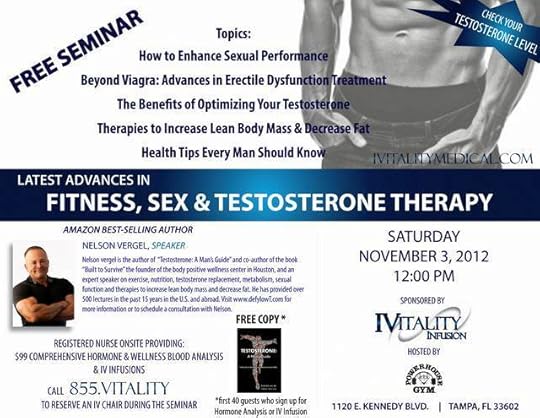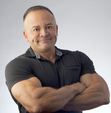Nelson Vergel's Blog, page 4
March 14, 2013
Testosterone: Miracle drug or fake science?
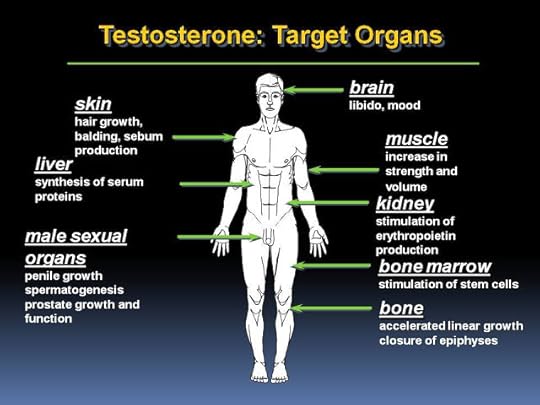
Low testosterone. For men, these words have the same foul odor as “impotence,” “shrinkage” or “Justin Bieber.” The topic is taboo. Throughout civilization testosterone has been prized as the lifeblood of manhood, so a deficit would imply, by definition, that we are somehow less manly.
Yet despite this ancient bias, there’s now a growing push in the medical community to help diagnose low testosterone, clear up the fog of misconceptions and treat the issue with Testosterone Replacement Therapy, or TRT.
Let’s imagine that you, or, better yet, “your friend,” is experiencing the symptoms of low testosterone: fatigue, a sense of blahness, low sex drive, an iffy stiffy. Your friend could visit Dr. Alan Shindel at the UC Davis Medical Center, who would first try and identify other possible causes. “Even men with completely normal levels of testosterone can have erectile dysfunction, low sex drive or poor energy,” says Shindel, a urology specialist. “Sometimes the cause of a man’s symptoms is just life — stress, medical conditions, relationship issues, trouble at work.”
But it could be “Low T.” Testosterone, a hormone, does more than just power your sexual engine. The body uses it to help support muscle growth, strengthen bones, regulate the count of red blood cells, boost psychological well-being and promote a healthy distribution of fat. When the average man hits 30, his testosterone levels begin falling by about 1 percent each year. As the hormones decline, the body becomes less efficient. Sometimes the side effects aren’t imagined, they’re real.
Read more here

Published on March 14, 2013 12:06
February 3, 2013
Omega 3 and Coenzyme Q-10 Supplements Decrease PSA (prostatic-specific antigen) Levels
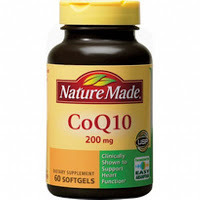
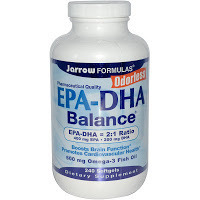
A recently published study showed that both omega 3 fats and Coenzyme Q10 may help prostate health. In the study, 504 healthy men aged 40 to 70 with prostate-specific antigen (10) levels < 2•5 nanograms/milliliter were given one of the following per day for 12 weeks:
Omega-3 fatty acids (4.48 grams of EPA and 2.88 grams of DHA = 126 patients)
Omega-6 fatty acids (2,400 milligrams of Gamma-linolenic acid = 126 patients)
CoQ10 (400 milligrams = 126 patients)
Placebo = 126 patients
By the end of 12 weeks, those in the EPA/DHA group saw their prostate-specific antigen levels significantly fall by 30% . This compared to a 15% increase in the gamma-linolenic acid group and a 33% drop in the Coenzyme Q10.
No data is available for a EPA/DHA+ COnezyme Q10 combination.
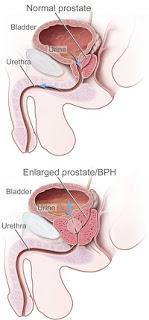
Reference:
Br J Nutr. 2012 Nov 30:1-8. [Epub ahead of print]
Effects of EPA, γ-linolenic acid or coenzyme Q10 on serum prostate-specific antigen levels: a randomised, double-blind trial.
Safarinejad MR, Shafiei N, Safarinejad S.
Source
Clinical Center for Urological Disease Diagnosis and Private Clinic Specialized in Urological and Andrological Genetics, PO Box 19395-1849, Tehran, Iran.
Abstract
The main objective of the present study was to determine the potential of n-3 and n-6 fatty acids or coenzyme Q10 (CoQ10) to alter serum prostate-specific antigen (PSA) levels in normal healthy men. A total of 504 healthy men with serum PSA level ≤ 2·5 ng/ml were recruited into the study. Serum PSA values were not segregated by decade of age. Participants were randomly assigned to a daily dietary supplement containing n-3 fatty acids (1·12 g of EPA and 0·72 g of DHA per capsule) (group 1, n 126), n-6 fatty acid (600 mg γ-linolenic acid (GLA) each capsule) (group 2, n 126), CoQ10 (100 mg per capsule) (group 3, n 126) or a similar regimen of placebo (group 4, n 126) for 12 weeks. Study medication was administered as two capsules to be taken twice daily. Serum levels of PSA, EPA, DHA, GLA, lipid profile and reproductive hormones were also measured. EPA treatment significantly reduced serum PSA level by 30·0 (95 % CI 25, 36) % (P = 0·004) from baseline. In contrast, GLA therapy significantly increased serum PSA concentration by 15·0 (95 % CI 11, 20) % (P = 0·02). CoQ10 therapy also significantly reduced serum PSA level by 33·0 (95 % CI 27, 40) % (P = 0·002). In multivariable analysis, serum values of PSA were strongly correlated with duration of EPA (r - 0·62; 95 % CI - 0·42, - 0·77; P = 0·003), n-6 (r 0·42; 95 % CI 0·31, 0·58; P = 0·02) and CoQ10 use (r - 0·77; 95 % CI - 0·56, - 0·87; P = 0·001). There were also significant correlations between serum values of DHA, EPA, GLA and CoQ10 and serum PSA levels. The present study demonstrates that dietary supplements containing EPA, GLA or CoQ10 may significantly affect serum PSA levels.

Published on February 03, 2013 11:46
February 1, 2013
Testosterone Week: How I Doubled My Testosterone Levels Naturally and You Can Too
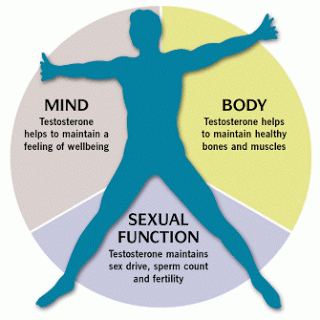
From Brett at artofmanliness.com
At last we’ve reached the final post of Testosterone Week and based on the comments from you all, this is the post you’ve been most looking forward to. Today I’m going to share what I did during my 90-day experiment in order to double my total and free testosterone levels.
I’m afraid I have no super cool “secrets” to share and there are no easy shortcuts to increasing your T. If you were expecting some magical potion or supplement or weird body hack that will instantly and naturally increase your T levels, what follows is bound to disappoint. Despite what some companies or websites might tell you, there’s no single thing that will boost your testosterone naturally for the long term.
The unsexy truth is that increasing testosterone naturally simply comes down to making some long-term changes in your diet and lifestyle. As you’ll see, what I did to increase T largely boils down to eating better, exercising smarter, and getting more sleep. That’s pretty much it. But as with most things in life, the devil is in the details, so I’ll share with you exactly what I did and provide research that explains why the things I did helped boost my testosterone.
The good news here is that while the things I recommend below will boost your T, their effect is hardly limited to testosterone. They’ll greatly increase your overall health and well-being at the same time.
Ready to get started?
For more information, click here

Published on February 01, 2013 12:42
January 23, 2013
Which Medications Can Cause Man Boobs?
Drug-Induced Gynecomastia
Deepinder F, Braunstein GD. Drug-induced gynecomastia: an evidence-based review. Expert Opin Drug Saf.http://informahealthcare.com/doi/abs/10.1517/14740338.2012.712109
Drugs are estimated to cause about 10 - 25% of all cases of gynecomastia. Over the course of several decades, multiple medications have been implicated in the development of gynecomastia mostly in the form of case reports and case series. However, these reports suffer from a multitude of deficiencies, including poor quality of evidence. Areas covered: Studies were selected for this review by performing an extensive electronic and hand-search using BIOSIS, EMBASE and Medline, from 1940 to present, for all reported drug associations of gynecomastia and their possible pathophysiology. Quality of evidence was assessed on a three-point scale: good, fair and poor, and each of the drugs reported to cause gynecomastia was assigned a level of strength.
The pathophysiology of gynecomastia is also discussed in detail for each of the drugs found to have a good or fair evidence of association with gynecomastia. Expert opinion: Most of the reported drug-gynecomastia associations were based on poor quality evidence.
The drugs definitely associated with the onset of gynecomastia are spironolactone, cimetidine, ketoconazole, hGH, estrogens, hCG, anti-androgens, GnRH analogs and 5-alpha reductase inhibitors. Medications probably associated with gynecomastia include risperidone, verapamil, nifedipine, omeprazole, alkylating agents, HIV medications (efavirenz), anabolic steroids, alcohol and opioids.
More information

Published on January 23, 2013 16:45
January 22, 2013
Do men really have higher sex drives than women?
SOURCE:
http://io9.com/5977668/do-men-really-...
Several studies show that men desire significantly more sex partners than women. (One survey found that, uninhibited by factors like disease or laws, college age females would ideally like to have 2.7 sex partners over the entire rest of their lives. College age males, on the other hand, desired an average of 64 lifetime sex partners.)
Men masturbate more. A meta-analysis of 26 studies on gender differences in sexual behavior found that "masturbation was the largest difference of all the variables they examined, with men nearly a full standard deviation higher than women."
Several studies to date indicate that women have an easier time than men going without sexual gratification. For a particularly interesting (if unsettling, given the long and sordid history of sexual abuse in the Catholic church) look at the ability and willingness to forego sex, see this investigation on clerical celibacy among Catholic men and women.
Men also spend way more money on porn, are less likely to report a pathological lack of sexual desire, and tend to rate their genitals — and the genitals of their partners — as more inherently lovable and attractive than women.

http://io9.com/5977668/do-men-really-...
Several studies show that men desire significantly more sex partners than women. (One survey found that, uninhibited by factors like disease or laws, college age females would ideally like to have 2.7 sex partners over the entire rest of their lives. College age males, on the other hand, desired an average of 64 lifetime sex partners.)
Men masturbate more. A meta-analysis of 26 studies on gender differences in sexual behavior found that "masturbation was the largest difference of all the variables they examined, with men nearly a full standard deviation higher than women."
Several studies to date indicate that women have an easier time than men going without sexual gratification. For a particularly interesting (if unsettling, given the long and sordid history of sexual abuse in the Catholic church) look at the ability and willingness to forego sex, see this investigation on clerical celibacy among Catholic men and women.
Men also spend way more money on porn, are less likely to report a pathological lack of sexual desire, and tend to rate their genitals — and the genitals of their partners — as more inherently lovable and attractive than women.

Published on January 22, 2013 09:03
October 30, 2012
Men's Health Lecture by Nelson Vergel This Saturday in Tampa, Fl
Published on October 30, 2012 08:17
October 27, 2012
Testosterone Is Associated With Age-Related Changes In Bone Health Status, Muscle Strength And Body Composition

Posted: 27 Oct 2012 05:08 AM PDT
Chin KY, Soelaiman IN, Mohamed IN, et al. Testosterone is associated with age-related changes in bone health status, muscle strength and body composition in men. Aging Male. http://informahealthcare.com/doi/abs/10.3109/13685538.2012.724740
Objective: Variations in testosterone levels are associated with several outcomes of aging. The present study aimed to examine the relationship between age-related decline of testosterone levels and changes in bone health status, handgrip strength, body fat percentage and fat-free mass.
Materials and methods: A total of 335 Malaysian Chinese and Malay men aged 40 years and above were recruited for this study. Their body compositions, calcaneal speed of sound and handgrip strength were measured and their blood was collected. Linear regression analysis was done to examine the relationship among age, testosterone levels and outcomes of aging.
Results: The results indicated significant changes in all testosterone measurements, sex hormone binding globulin level, calcaneal speed of sound, handgrip strength, body fat percentage and fat-free mass with age (p < 0.05). Age-dependent decline in bioavailable and free testosterone levels were significantly associated with reduction in calcaneal speed of sound, fat-free mass and handgrip strength (p < 0.05). Age-dependent decline in the total testosterone level was significantly associated with an increase in body fat percentage among the elderly men (p < 0.05).
Conclusion: Testosterone levels are associated with changes in outcome of aging such as bone health status, muscle strength and body composition, and the relationships are age-dependent.

Published on October 27, 2012 16:51
October 19, 2012
Practical Exercise Tips
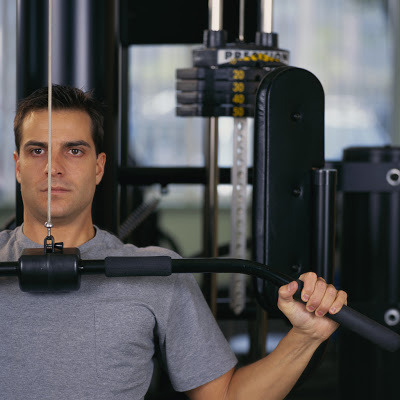
There are
many benefits of exercise . Beside the evident improved self-image, energy
levels, and mental outlook, several research studies have found the following clinical benefits
in body composition and metabolism:
•
1-
Produces improved muscle function, increased body dimensions and mass, and
strength when used alone.
•
2- May
also reduce trunk (belly) fat mass
•
3- Increases
muscle mass and decreases LDL when combined with testosterone in eugonadal
men (men with normal testosterone)
•
4-
Increases lean tissue accrual and strength gain
5-
Resistance exercise training-induced muscle hypertrophy may promote
triglyceride clearance
6- Exercise showed significant improvement in mood and overall distress
9-
Exercise can increase bone density in men and women.
10- Testosterone
and resistance exercise promote gains in body weight, muscle mass, muscle
strength, and lean body mass
11-
Exercise training resulted in a substantial improvement in aerobic function
while immune indices were essentially unchanged.
Things to Consider :
1-
Before you start. Get your blood pressure, heart
rate, weight, body dimensions, fasting cholesterol, triglycerides and blood sugar
measured before you start an exercise program. Your doctor should be
able to advise you if you are capable of exercising without health problems.
Check these variables monthly if you can.
2-
If you are tired. If tired and weak, start walking
every day to your best abilities.
Walking can help increase energy levels to start a more intensive
exercise program later on when you are feeling better. Using a cheap pedometer
to measure your daily steps is useful. Trying to reach 10,000 steps a day has
been associated with good cardiovascular health and fat loss.
3-
Cardiovascular/aerobics. Do low to no impact aerobic
exercise three to four times a week. Exercising for 20-40 minutes in a
stationary bike, elliptical trainer, or trade mill will increase your aerobic
capacity, help to burn fat, and decrease cholesterol, tryglicerides and blood
sugar. Do not do aerobic exercise if you are losing weight involuntarily or if
you are tired or recovering from illness.
Some people worry that cardiovascular (aerobic) exercise can increase
fat wasting (lipoatrophy) but this fear is a speculation in our opinion.
4-
Weight Training (Resistance
Exercise) Weight train
with weights and machines three times a week for one hour. Starting with machines is the safest way
until you get familiar with the exercises. As you get more confident and
stronger, bring in free weight exercise (hopefully with the help of a workout
buddy). Working out for more than an hour can cause over-training that can
destroy your muscles and decrease your strength. Warm up before you work out
and stretch afterwards to prevent injury. A light carbohydrate meal (fruits,
carbohydrate drinks, etc) before a work out and a protein rich one afterwards
is advisable. Keep yourself hydrated well with plenty of water throughout the
work out. As you get stronger, increase your weights in every exercise.
Exercise one body part per week, and three exercises per body part. Three sets
per exercise and eight to ten repetitions per set (to momentary muscular
failure- meaning until you can not do another rep) are enough. Eat a good
healthy and balanced meal with protein, vegetables and fruit after a work out.
Get plenty of rest.
Other
Important Things to Consider:
·
Learn how to do each exercise
correctly and
concentrate on using strict form.
·
Make sure your muscles are warm before targeting them with more
challenging weights
·
Don’t use momentum; use a deliberate speed of
movement to increase the effectiveness of the movement. Cheating this way takes
work away from the targeted muscles.
·
Use a full range of motion on all
exercises. Feel the muscle stretch at the bottom and go
for a momentary peak contraction at the top.
·
Feel the muscle working by
keeping your head into what you’re doing. Focus on your muscles
contracting and relaxing. Concentrate on your body on exercise, not on thoughts
and people around you.
·
Briefly stretch the major muscle
groups before your training. This helps flexibility and muscle recovery.
·
If the weight’s too light (more
than 12 repetitions), try using a heavier resistance or doing the movement more
slowly and really feel the contraction.
·
Keep rest periods to no more than
about 20-3- seconds, or
shorter, depending on how tired you are from your last set. This will also help to give your heart a
mini-workout.
Safety
First!
Always remember - safety
first. If something you do in an exercise hurts, stop! Ask for help to
figure out what you are doing that’s wrong. Maybe it’s improper form. If you hurt yourself you will hinder your
progress because you won’t be about to work out! Learn proper form!
Commit
Yourself
First thing is to join a gym if you can afford it. If you spend
the money, you’ll be more likely to stay with it, and consistency is the key to
success in any exercise program. Also, try to find someone who is enthusiastic
to train with, or get a personal trainer (if you can afford one). It’s easier
to stay motivated when you train with someone else who has a vital interest in
your mutual success. It’s also safer to have someone to spot you when you lift
heavy weight.
Do Not Overtrain!
Overtraining is probably the most ignored factor by exercise
enthusiasts. In order to build muscle,
the body has to receive a stimulus ‑‑ a reason ‑‑ to grow bigger, or hypertrophy. It's really very simple: the body only does
what it needs to do ‑‑ what it is required to do. It isn't going to suddenly
expand its muscle mass because it anticipates needing more muscles. But if it
is challenged to move weights around, it will respond by growing. Another way
to look at it is if you take ANY bodybuilder and put him in bed for weeks at a
time, he'll begin to rapidly lose muscle mass ‑‑ because the body will sense it
doesn't need the extra muscle any more! So, one needs to deliver the STIMULUS
to stimulate muscular hypertrophy (growth) in the body ‑‑ and that's what
lifting weights does. BUT -
overdoing that, overtraining, overstresses the body and initiates the process
of actually breaking down muscle mass as the body begins to burn its own
muscles to use for fuel! This is why so many people don’t grow at a satisfying
rate.
Even worse, often times these people will think they aren’t
training hard enough, and INCREASE their exercise routines thinking they just
need MORE stimuli! And this is where the biggest error is made -- more is NOT
necessarily better! It seems paradoxical that you could work out LESS and grow
MORE, but this is VERY OFTEN the case.
Therefore, ANY EXERCISE beyond that which is the exact amount of
stimulus necessary to induce optimal muscle growth is called OVERTRAINING.
Let’s repeat that again: EXERCISING MORE than what the body requires to
stimulate it maximally to grow is OVERTRAINING.
Recommended
- A Workout Log
The best reason to keep track of your workouts is so that you can
see graphically what you are accomplishing, and analyze your pattern to see if
you’re overtraining. That is, you program your mind when you look at black and
white and you will also be able to see whether you’re graining at a reasonable
rate. You will find that if you log your workouts, if you are overtraining, you
won’t be gaining in strength, and this adds up to not gaining in muscle size.
So document your workouts by keeping track of the weight you lift and the
amount of reps you lift for each exercise, and then when you go in to train
again the next week, you know what you are trying to better. If you find out
that you’re weaker than you were the time before, and everything else like
nutrition, etc. are in line, you may be training too often
Food and Hydration
1-
Drink at
least 8 glasses of water a day to keep hydrated. Dehydration can rob you on
energy for your workouts. Drink plenty of water while working out and avoid drinking
drinks containing sugars since they will cause fatigue after an initial raise
in energy.
2- Do not work out after eating a
regular meal. Wait at least two hours. If you need a snack, have some fruit and
a slice of toast with peanut butter 1 hour or more before working out. Do not
consume protein shakes before working out (leave it for after the work out).
Digestion will slow down your workouts and bring your energy down.
3- Within 30 minutes to and hour
after the work out, feed your muscles with a balance meal containing protein,
good fats (olive oil, flaxseed oil), and complex carbohydrates like fruits and
whole grains.
4- Supplements like glutamine,creatine
and whey protein may be a good thing to consider. A shake containing 1 heaping
table spoon of glutamine, two table spoons of flaxseed oil, one or two scoops
of whey protein, milk (if you are not lactose intolerant, otherwise almond or
rice milk- not soy since it has shown to increase estrogen in men), and fruit
provides a good balance meal after a work out.
Resistance training for best results :
Starters: Once-A-WEek training:
This section is for those who have only recently recovered from
illness, or just getting into weight lifting for the first time. For the first
few weeks, until your stamina is up, do only one workout per week. This workout
is a whole-body workout program that looks like this:
“Warm-up set” (wu) weight means a
set where you use a weight that is about 50-60% of the heavy weight set that
you use. “Heavy” (hvy) means a weight that you are only capable of lifting 6-12
times before complete muscular failure.
1. Barbell flat bench press - 2 wu and 1 hvy set
2. Curl-grip pulldowns - 2 wu and 1 hvy set
3. Squat or seated leg press - 2 wu and 1 hvy set. Squats are a
“best” exercise, but some people have to substitute the leg press because their
back won’t tolerate squats.
Warm-up sets employ poundage that you know you can easily
handle for 12 repetitions (reps). Rest for about one minute between sets or
longer - until you feel like you have enough energy to go again. Two warm up
sets should be enough to warm all the joints involved without tiring you too
much. Then do the heavy set. You want to lift the weight until you can’t lift
it again. This is called “momentary muscular failure”.
Important: It’s important to go to failure
to trigger the muscles to grow, but challenge yourself to the best of your ability. Your level of intensity in
the beginning won’t be as much as it can be later, after you’ve been at it for
a while.
Do this workout on a day when you feel relatively good.
If you find that you feel exhausted during the beginning efforts,
pace yourself more carefully and make sure your nutrition is good. You should
be getting balanced nutrition (like food!) three to six times a day and be sure
to get plenty of rest and recovery. Protein drinks can fill in between meals.
(I.e. three meals with two or three drinks.) Continue with once-a-week workouts
until you find that you feel good enough to workout on a second non-consecutive
day of the week. Then do this same workout twice a week. When you feel good
enough to workout three days a week, it’s time to start splitting the workout
up to separate the body parts. You will also be starting to train your heavy
sets with more intensity -- so you’ll see an acceleration of the muscular
gains.
THE THREE
DAY SPLIT
Day #1 Chest, Shoulders, Triceps
Barbell flat
bench press - 2 wu and 1 hvy set
Barbell
military press - 2 wu and 1 hvy set
Triceps
pushdowns - 2 wu and 1 hvy set
Day 2: Back, Biceps, Abs
Curl grip
pulldowns - 2 wu & 1 hvy set
Barbell
biceps curl - 2 wu & 1 hvy set
Crunches - 3
sets of 10-20
Day 3: Quadriceps, Hamstrings, and
Calves (Legs)
Squat or leg
press - 2 wu and 1 hvy set
Again, the squat is the better
overall exercise, but some people cannot do it because of back problems, so
they do the leg press.
Lying leg
curls - 2 wu and 2 hvy sets
Standing
calf raises - 2 wu & 1 hvy set
Workout Log
Keep a record of your workouts and when you can lift a weight
for 12 reps, raise the weight 5-10 lbs. so that you can only lift 6 reps. Then
try to increase the number of reps you can lift each time you workout to arrive
at 12 reps again, and repeat the progression so that you keep increasing the
weight you lift. As you grow stronger, you will grow bigger muscles. You’ll
probably be pretty sore during your recovery days. Let yourself heal so that
the soreness goes away for best recovery and growth, even if this means you put
several days between workouts.
Keep in mind that the goal is to gain strength and lean body mass.
Usually strength precedes size, so you get stronger and then notice that you’re
getting more muscular.
Descriptions
of the Exercises:
One of the
best web sites that show video clips of exercises and explain anatomy is
http://www.exrx.net/Lists/Directory.html
You can also find most
exercise routines explained in videos on youtube.com and manshealth.com

Published on October 19, 2012 09:44
October 15, 2012
Natural Testosterone Boosters- What Do Studies Show?
These are a few studies that looked at increasing testosterone with different supplements. Most are small , done in rats and not well controlled, but they provide interesting data.
Click on each for more details (Thanks to Ergo-Log.com)
Shilajit boosts fertility and testosterone level 04.10.2012
Pleurotus eryngii: more growth hormone, IGF-1 and testosterone19.09.2012
A little bit of Royal Jelly increases testosterone level by 20 percent16.08.2012
Spanish chamomile, the herbal T-booster for bodybuilders 24.05.2012
Massularia acuminata raises testosterone level and libido in animal study 20.05.2012
Greater burdock for more testosterone11.05.2012
Tea for temporary T boost 24.04.2012
Cordyceps sinensis is not much use to young bodybuilders 17.11.2011
More vitamin K2, more testosterone08.11.2011
Man's testosterone level sky-high from ActivaTe Xtreme 17.09.2011
More magnesium means more testosterone and IGF-1 06.08.2011
Testofen: fenugreek extract that boosts men's libido 02.08.2011
Breakfast boron capsule boosts testosterone 29.07.2011

Published on October 15, 2012 21:14
October 10, 2012
Weight Loss and Immune Booster Supplements- Can We Trust Them?
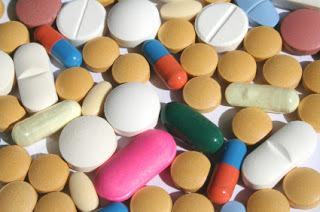
The Department of Health and Human Services Office of Inspector General released two reports (see here and here) critical of dietary supplements in the weight loss and immune support categories. OIG focused on those categories because they were reported by experts to be among the most popular. (Perhaps not coincidentally, products marketed in the weight loss and immune support categories have also been of keen interest to the FTC.)
Overall, substantiation documents for the sampled supplements were inconsistent with FDA guidance on competent and reliable scientific evidence. FDA could not readily determine whether manufacturers had submitted the required notification for their claims. Seven percent of the supplements lacked the required disclaimer, and 20 percent included prohibited disease claims on their labels. These results raise questions about the extent to which structure/function claims are truthful and not misleading.
Twenty-eight percent of contacted companies had facilities that failed to register with FDA as required. Of the companies with facilities that did register, 72 percent failed to provide the complete and accurate information required in the registry. Finally, 20 percent of dietary supplement labels in our sample did not provide the required telephone numbers or addresses.
Source: Click here

Published on October 10, 2012 12:46



